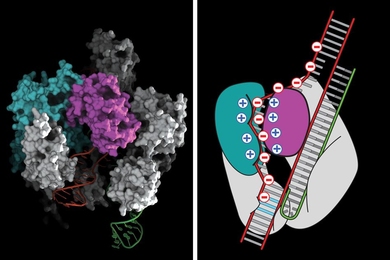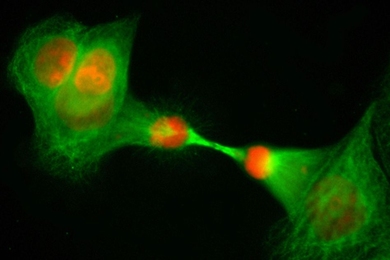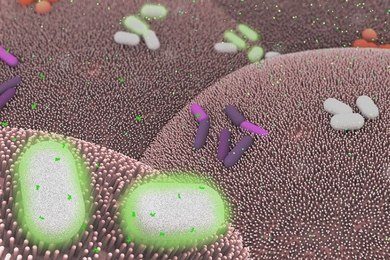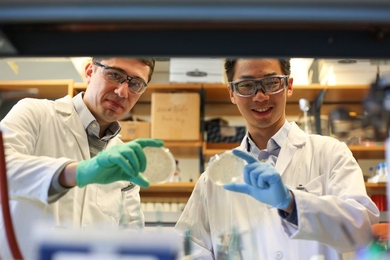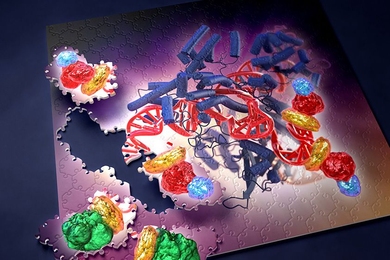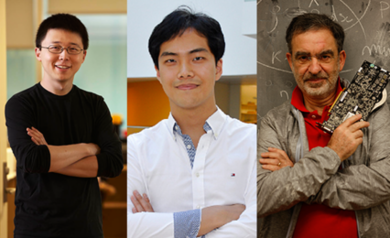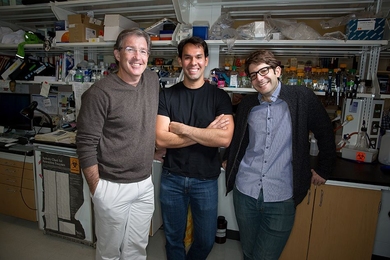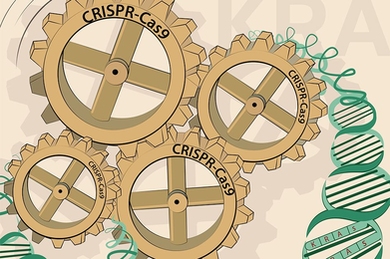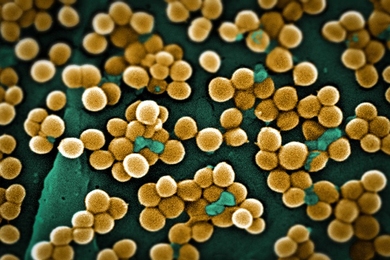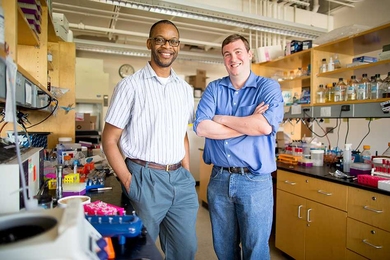Search Stories
MIT, Broad scientists overcome key CRISPR-Cas9 genome editing hurdle
Team re-engineers system to dramatically cut down on editing errors; improvements advance future human applications.
New system for human genome editing has potential to increase power and precision of DNA engineering
CRISPR-Cpf1 offers simpler approach to editing DNA; technology could disrupt scientific and commercial landscape.
A metabolic master switch underlying human obesity
Researchers find pathway that controls metabolism by prompting fat cells to store or burn fat.
Identifying a key growth factor in cell proliferation
Researchers discover that aspartate is a limiter of cell proliferation.
Researchers develop basic computing elements for bacteria
Sensors, memory switches, and circuits can be encoded in a common gut bacterium.
3 Questions: Kenneth Oye on regulating drugs
New potential for “homemade” opiates raises oversight issues.
New evidence for how a rare form of liver cancer arises
MIT team finds mechanism by which exposure to vinyl chloride may produce cancerous mutations.
Taking technology from the lab to the patient
Daniel Anderson wants to bring advances in drug delivery and biomaterials to the clinic.
MIT researchers to receive awards from the Society for Neuroscience
Three neuroscientists at MIT have been selected to receive awards from the Society for Neuroscience.
Fast modeling of cancer mutations
New genome-editing technique enables rapid analysis of genes mutated in tumors.
Researchers engineer new mouse model to study disease
Time-saving tool takes advantage of CRISPR gene-editing technology.
Battling superbugs
Two new technologies could enable novel strategies for combating drug-resistant bacteria.
An easier way to manipulate malaria genes
New approach to knocking out parasite’s genes could make it easier to identify drug targets.

